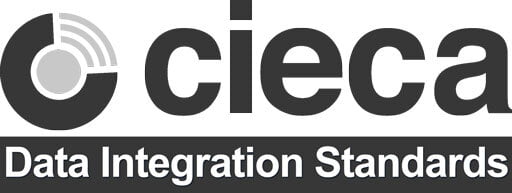Car-Part.com Shares Experience Using New CIECA API Standards (CAPIS)
As the collision industry begins using the new CIECA API Standards (CAPIS), created by the Architecture Committee, we will talk to member companies about their experience. We recently asked Jeff Schroder, founding CEO of Car-Part.com, whose recycled parts marketplaces serve $80 billion in part searches (quotes) per year, to share information about the new standards, how Car-Part.com is using them and why the industry should adopt CAPIS in their businesses.
Q: As a long-time member of CIECA’s Architecture Committee, can you explain CAPIS?
A: CAPIS are CIECA’s third generation of standards after EMS and BMS. They are based on the Open API Standard, used by businesses such as Amazon, Apple, Google and Microsoft. API stands for application programming interface, which is how computers or programs talk to one another.
Open APIs are simple and easy to use. They provide developers a high level of flexibility and freedom and help facilitate companies connecting platforms. CIECA’s Architecture Committee decided to use REST APIs because they are flexible and straightforward.
REST is the architectural style that defines a set of constraints to be used for creating web services. Rest services are language-independent, which means they are universal and will work on any company platform.
Q: Why were CAPIS chosen for CIECA’s new standards?
A: For the past 15 years, the BMS has been available for the collision industry to communicate from one platform to another. From an intellectual property point of view, it’s an incredible starting point. However, there are a lot of hierarchies or layers in BMS to get the data you need.
CIECA’s Architecture Committee has altered these hierarchies and created objects that are easy to use. Some of the things that have been more complex in BMS have been simplified in CAPIS.
CAPIS uses simple structures to communicate APIs for specific purposes. For example, you might have an API where an estimating system platform communicates with a parts provider platform. CAPIS makes this very straightforward to do.
The version we’re using—Open API 3.1—is compatible with JSON, which is also easy to use. CAPIS provides the collision industry with a data dictionary in JSON format, which makes it great to create simple standards and interfaces.
By working within the Open API framework, you get not only transport and web services, but also security and authentication standards. This wasn’t a focus when BMS was initially created. Starting with the right tech framework makes it easy for the collision industry to use CAPIS to connect platforms. That’s the key benefit of the new standards.
Q: How is Car-Part.com using these standards?
A: Car-Part.com began using the first version of CAPIS for its e-commerce implementation in April 2023 after CIECA’s first standard release of the year. The goal was to have the company’s management system offer parts ordering and payment methods through our marketplace. We decided to start utilizing the work already done in CIECA’s Architecture Committee. We added some additional objects and properties to the data dictionary. Specifically, we added companies, contacts and users. We also made some additions to the code lists. Those changes resulted in the second version of CAPIS, which is being used by Car-Part.com today.
Throughout the process, we worked with some really smart people on the Architecture Committee, which helped us a lot. This included Dan Webster, CIECA’s Architecture Chair and Principal Architect, IT Enterprise Architecture for Enlyte, and Andy Bober, software engineer at Entegral.
We used the existing CAPIS objects to create parts invoices, payments and fulfillment updates. We were able to do that with the test instances being provided and using the tools called Stoplight Studio and Postman. It has been very beneficial for our developers and has made it very straightforward to do the updates.
Q: Why should collision industry businesses use the new standards and participate in a CIECA committee?
A: If your company’s developers are not currently using JSON, it’s really something they should consider. As I mentioned earlier, it keeps things simple and only uses the data that is required.
As more members begin using CAPIS, the goal is to keep improving the capabilities for different integrations.
CIECA is in the process of reactivating the committees formed in 2006 while we were building the BMS. If you're working on projects today that involve interfaces with industry partners, we encourage you to work with CIECA and help us create the next generation of CIECA standards for the collision industry.
Learn more about Car-Part.com.
If you would like to share information about your standards implementation in the next CIECA spotlight article, please email stacey@cieca.com.
